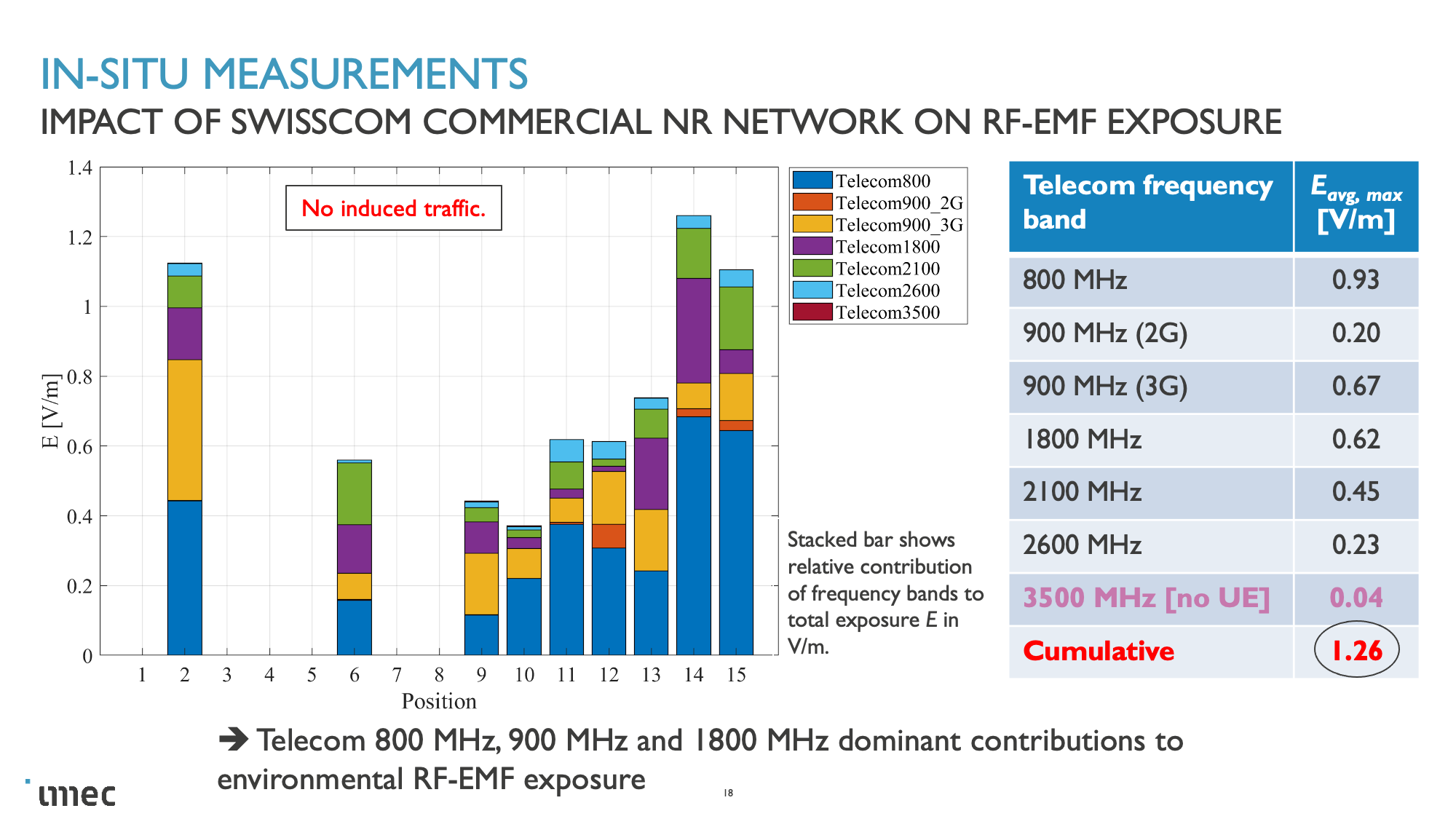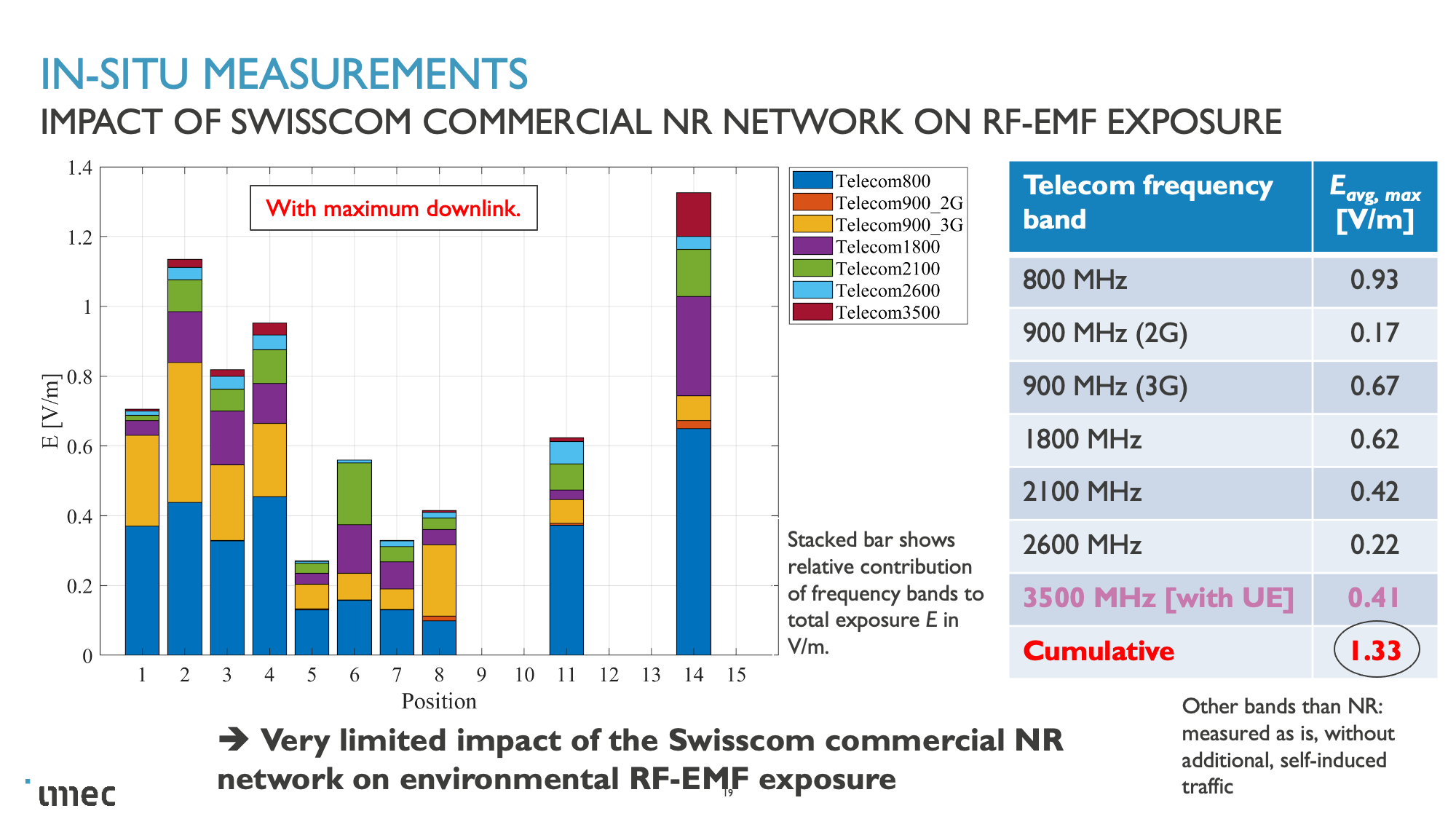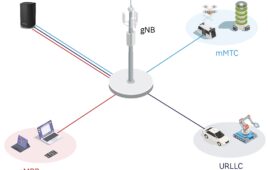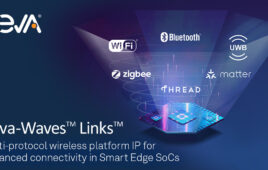Measurements show EM fields from 5G Massive MIMO base stations fall within WHO boundaries for human safety.
Massive multiple-input/multiple-output (MIMO) technology, a key enabler of 5G networks, uses antennae consisting of tens of sub-elements to direct radio beams to mobile users’ exact location. This makes for much better signal quality, but is also at the basis of 5G’s less predictable electromagnetic field (EMF) radiation patterns.
My team and I have developed novel tools and models for Massive MIMO-based EMF exposure estimation in the human body. To do so, we adapted existing hybrid ray tracer/FDTD (finite-difference time-domain) technology to accurately calculate 5G’s EMF exposure levels — independent from an operator, with few data, and at low cost.
A series of lab and in-situ experiments had already confirmed that our measurements are in line with the numbers obtained in previous studies. Along the way, we observed that people making use of a dedicated 5G radio beam might experience higher (local) EMF exposure levels than those not interacting with their smartphones.
While the initial tests were conducted using pilot networks, we have now been the first to assess the EMF radiation emitted by a commercial Massive MIMO-enabled 5G New Radio (NR) network. In this article, you’ll find our latest findings and measurement results where we compare them to the World Health Organization’s (WHO) EMF exposure guidelines. These guidelines are based on recommendations from the International Commission on Non-Ionizing Radiation Protection (ICNIRP).
A first: Measurements of EMF radiation emitted by a commercial 5G network
To investigate how much EMF radiation one of Europe’s first commercial 5G networks emits, we selected 15 measurement locations within a radius of 400 m from a 5G antenna in Bern, Switzerland. We were particularly interested in measuring the impact of maximum downlink (or worst-case) traffic scenarios. The recent ruckus on 5G’s alleged health risks only added to that interest.
For the time being, 5G covers a limited number of active subscribers. Even so, we had to consider the Swiss regulator’s decision to currently restrict 5G antenna output power to a maximum of 8.1 W. That is far less than their maximum output capacity of 200 W, meaning that we had to rescale our measurements to more realistic power levels before interpreting them.
Takeaway 1: 5G networks without induced traffic marginally add to nonusers’ cumulative RF-EMF exposure
Figure 1 depicts the cumulative RF levels at each of the fifteen measurement locations when no traffic is induced (i.e. when a subscriber is not using the network). The stacked bars show the relative contribution of the different frequency bands. Clearly, 2G’s, 3G’s & 4G’s 900 MHz, and 4G’s 800 MHz & 1.8 GHz bands are the primary sources of EMF radiation — featuring average electric field (EAVG) values of 0.67 V/m, 0.93 V/m, and 0.62 V/m, respectively.

Figure 1. The 800 MHz, 900 MHz and 1.8 GHz telecom bands contribute dominantly to the environmental RF-EMF levels measured at the team’s predefined locations. When no traffic is induced, Massive MIMO-enabled 5G NR networks come with negligible EMF radiation. Source: imec.
What is particularly interesting is that the Massive MIMO-enabled 5G NR network — using the 3.5 GHz band — barely adds to nonusers’ cumulative RF-EMF exposure. At the measurement locations we studied, it comes with an EAVG of 0.04 V/m only. Concretely, that means 5G’s EMF emissions account for a mere 3% of a nonuser’s cumulative RF-EMF exposure — which is five to 25 times less than the radiation one incurs through the surrounding 3G and 4G networks.
Takeaway 2: Even at maximum downlink capacity (and at 200 W), 5G’s reported EMF emissions are limited to 0.62% of the international ICNIRP guidelines
Our second set of measurements (see Figure 2) relates to the Swiss Massive MIMO-enabled 5G NR EMF emissions at (theoretical) maximum downlink capacity.

Figure 2. 5G NR’s overall contribution to subscribers’ cumulative EMF exposure is still fairly limited — even at maximum downlink capacity. Source: imec.
Here, our measurements indicate that 5G’s EMF levels are similar to the ones emitted by today’s 2G, 3G, and 4G networks. At low antenna output power levels, Eavg amounts to 0.41 V/m. At 200 W, this translates in an EAVG of 4.81 V/m. Those numbers are higher than the radiation that is typically generated by 4G networks, yet merely equal 0.62% of the ICNIRP exposure guidelines.
Conclusion: All measurements remain well below the ICNIRP standards
For our research group, it was crucial to be able to validate our 5G EMF exposure assessment approaches using a commercial network. We now have ample proof that our measurements are highly reliable, and already have plans to upgrade our models and tools — adding additional users, future deployment models, etc.
Along the way, we have been able to largely confirm some prior findings. For instance, thanks to their targeted radio beams, 5G networks barely seem to add to nonusers’ cumulative RF-EMF exposure levels. And when subscribers make use of the network’s (theoretical) full downlink capacity, all reported measurements remain well below the ICNIRP standards as well.
While these concrete numbers are only valid for the Massive MIMO-enabled 5G NR network in Bern, one of the main take-aways for international stakeholders — operators, regulators and the general public alike — is that 5G networks can effectively be deployed within the cumulative EMF emission boundaries set by the WHO. That should reassure many people.
Want to know more?
S. Aerts, K. Deprez, M. Van den Bossche, D. Colombi, L. Verloock, L. Martens, C. Törnevik, W. Joseph, “In-Situ Assessment of 5G NR Massive MIMO Base Station Exposure in a Commercial Network in Bern, Switzerland,” Applied Sciences, accepted 2021. (Impact Factor: 2.474, Q2, Rank: 88/177)
S. Shikhantsov, A. Thielens, G. Vermeeren, E. Tanghe, P. Demeester, L. Martens, G. Torfs, W. Joseph, “ Hybrid Ray-Tracing/FDTD method for exposure evaluation of a massive MIMO technology in an industrial indoor environment,” IEEE Access, accepted 2019, Digital Object Identifier 10.1109/ACCESS.2019.2897921. (Impact Factor: 3.557, Q1, Rank: 24/148).
S. Shikhantsov, A. Thielens, S. Aerts, L. Verloock, G. Torfs, L. Martens, P. Demeester, W. Joseph, “Ray-Tracing-based numerical assessment of the spatial duty cycle of 5G Massive MIMO in an outdoor urban environment,” Applied Sciences Special Issue “Human Exposure in 5G and 6G Scenarios”, accepted 2020, invited. (Impact Factor: 2.474, Q2, Rank: 88/177)
Wout Joseph is a professor at WAVES, an imec research group at Ghent University (Belgium). He obtained a PhD degree in electrical engineering at Ghent University (2005). He has specialized in measuring and modeling electromagnetic fields emitted by mobile base stations, and the health effects of being exposed to electromagnetic radiation. He has served on the EBEA’s (European Bioelectromagnetics Association) board of directors since 2015.




My two phones one apple and one Samsung put out up to 400 and sometimes 500 V/m with the cell signal. They do not do it with wifi. My MacBook also do this. If I have my phones near me or laptop, I get extreme migraines and stomach aches. I haven’t met anyone who cares though.
How did you get those numbers in V/m? Did you measure them? What was your method?